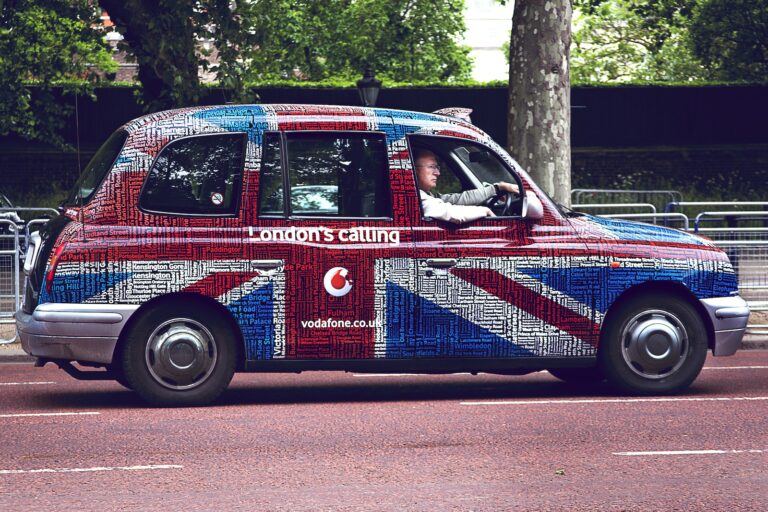Book a Taxi
London Taxis
You might think that London taxis are just ordinary cars, but they are so much more than that. These iconic vehicles have a rich history and come in different types, each with its own unique features.
From the classic black cabs to the modern electric models, London taxis are an integral part of the city’s transportation system.
In this article, we will delve into their fascinating history, explore the various models available, and discuss important regulations to ensure your safety while using them.
Key Takeaways
- London taxis have a long and rich history dating back to the 17th century, with the introduction of motorized taxicabs in 1903 revolutionizing the industry.
- The iconic black cab is a popular type of London taxi, but electric London taxis are gaining interest due to their zero emissions and lower operating costs.
- London has updated its licensing and fare regulations to adapt to the rise of ride-hailing services, ensuring safety, accessibility, and fair pricing for passengers.
- Safety precautions such as verifying the taxi, using reputable companies, and taking extra precautions for female travelers are important when using taxis in London.
History of London Taxis
The history of London taxis dates back to the 17th century. Over the years, these iconic vehicles have undergone several evolutionary changes that have shaped the transportation industry.
In the early days, horse-drawn carriages were used as taxis, but in 1903, motorized taxicabs were introduced to the streets of London. This innovation revolutionized the taxi industry and paved the way for modern-day cabs.
Throughout history, there have been many famous taxi drivers in London who have left a lasting impact on both locals and tourists. One such driver was George Smith, who is believed to be the first person to use the term ‘taximeter’ for calculating fares in 1897.
London taxis have also had a significant impact on the transportation industry. Their distinctive design and reliable service have made them an integral part of London’s identity. These taxis provide a convenient mode of transport for residents and visitors alike and contribute to reducing traffic congestion by offering shared rides.
Types of London Taxis
One popular type of London taxi is the iconic black cab. However, there is a growing interest in electric London taxis, which could shape the future of the industry. Electric taxis offer several advantages over traditional petrol or diesel-powered cabs. They are more environmentally friendly, producing zero emissions and reducing air pollution in the city. Additionally, they have lower operating costs due to their energy efficiency. The future of London taxis seems to be moving towards sustainability and embracing new technology.
It’s worth noting that famous London taxi drivers have played a significant role in shaping the industry’s history. From Fred Housego, who won the game show Mastermind with his knowledge of London streets, to Billingsgate fish porter George Parker and his lively anecdotes, these drivers have become part of London’s cultural fabric.
As the industry evolves with electric vehicles becoming more prevalent, it will be interesting to see how these famous figures adapt and continue to influence the world of London taxis.
Iconic Models![]() London Taxi Regulations
London Taxi Regulations
If you’re planning to drive a taxi in the city, make sure you familiarize yourself with the current regulations.
The rise of ride-hailing services has brought significant changes to the taxi industry, prompting cities like London to update their licensing and fare regulations.
In London, all licensed taxis are required to meet specific criteria for safety and accessibility. This includes passing rigorous vehicle inspections and providing wheelchair-accessible vehicles. Additionally, drivers must undergo rigorous background checks and hold a valid Private Hire Driver’s License.
To ensure fair pricing for passengers, London has implemented strict taxi fare regulations that determine the maximum amount drivers can charge based on distance traveled or time spent in traffic.
Staying up-to-date with these regulations is crucial for any aspiring taxi driver in the city.
Stay safe using taxis

To ensure your safety when using taxis, it’s important to be aware of the regulations and requirements in place. Here are three key safety precautions you should take:
-
Verify the taxi: Always make sure that the taxi you’re getting into is licensed and clearly displays a valid identification badge. This ensures that you are riding with a legitimate and trustworthy driver.
-
Use reputable taxi companies: Research well-known taxi companies in your area or ask locals for recommendations. These companies often have strict background checks for their drivers, reducing the risk of encountering scams or unsafe situations.
-
Plan ahead for female travelers: Female travelers may face unique challenges, so it’s crucial to take extra precautions. Share your ride details with someone you trust, sit in the backseat, and avoid sharing personal information during conversations with drivers.
FAQs
How Much Does It Cost to Take a London Taxi?
Taking a London taxi can be costly compared to other modes of transportation. Factors like distance, time of day, and traffic influence the fare. To save money, consider using public transport or ride-sharing services instead.
Are London Taxis Wheelchair Accessible?
When considering accessibility in public transportation, it is crucial to evaluate the mobility options available. This analysis should include factors such as wheelchair accessibility and accommodations for individuals with limited mobility.
Can London Taxis Be Hailed on the Street or Do I Need to Book in Advance?
Hailing taxis in London is convenient, but during peak hours, availability may be limited. It’s recommended to book in advance to ensure a timely pickup and avoid any inconvenience or delays.
What Is the Average Lifespan of a London Taxi?
The average lifespan of a London taxi depends on its maintenance and usage. Regular maintenance can help prolong its life, but the costs can add up over time. Additionally, these taxis have an environmental impact due to their emissions.
Are London Taxi Drivers Required to Pass Any Special Tests or Exams Before They Can Drive a Taxi?
To drive a London taxi, you must meet special requirements and go through a licensing process. This includes passing tests or exams and completing a training program to ensure you are qualified to navigate the city’s streets.



